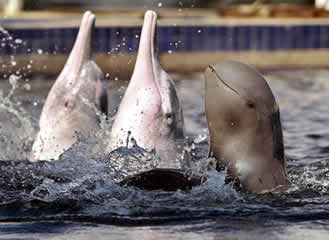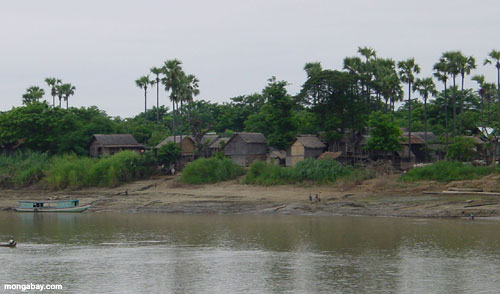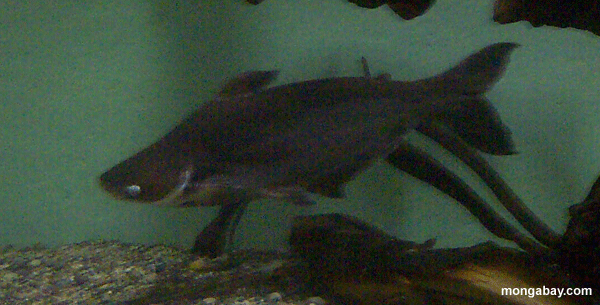|
|
|

|
"An Irrawaddy dolphin performs with two pink dolphins at the Oasis Sea World marine park in Chantaburi, nearly 290 km (190 miles) southeast of Bangkok on December 20, 2003."
Photo by ADREES LATIF (REUTERS)
Copyright Reuters
|

|
Irrawaddy River
Copyright Rhenda Glasco 2002
|

Pangasius Catfish
National Geographic reports "Only 11 and eight fish were caught in 2001 and 2002 respectively. In 2003, fishers captured six giant catfish in Cambodia, all of which were released as part of the Mekong Fish Conservation Project."
|
The Mekong River is home to at least 773 species of fish:
Mekong Fish Species
|
|
Dams to Blame for the Dying Mekong River?
|
|
Hydroelectric Threats to the Rainforest
|
Deaths of rare dolphins in Mekong River triples this year: biologist
Agence France-Presse
PHNOM PENH (AFP) Apr 09, 2004
http://www.terradaily.com/2004/040409093255.c2qtdqff.html
The number of rare dolphins dying in the Mekong River has tripled since last year, probably due to falling water levels or pollution, a biologist in Cambodia warned Friday.
Some 10 dolphins have died since the start of the year, compared with around three or four over the same period last year, dolphin biologist Isabel Beasely told AFP.
"It's a huge increase," she said by telephone from the river at the Cambodia-Lao border.
Around 100 endangered Irrawaddy dolphins are estimated to live in the Mekong River, with their habitat reduced this year by drought which has shrunk the river to a trickle in parts, exposing the dolphins more readily to fishing nets.
"At least two (of four adults) were caught in gill nets... We just don't know why the baby dolphins are dying. The low water on the Mekong is probably causing them to be more easily entangled in fishing gear," Beasley said.
Alternatively, the deaths may be due to pollution.
"In other countries, environmental pollution is a reason for high calf mortality," she said, noting that gold mining carried out along the river in Cambodia could be to blame.
"Nobody really knows what methods they are using or what chemicals they are using. This is something that needs to be investigated a little more."
The Mekong, which snakes through China, Myanmar, Thailand, Laos, Cambodia and Vietnam, was once home to thousands of the dolphins but the population has been devastated by fishing in recent years.
Beasley, who works on the Mekong Dolphin Conservation Project run in cooperation with the Cambodian fisheries department, said at least seven calves were among the remaining population, indicating the species could survive.
"Given effective conservation efforts, the population has a very good chance of surviving in the river... Conservation needs to be focused on the nine critical areas the dolphins are found," she said.
Lao and Cambodian villagers Friday worked together to remove fishing nets from a pool where two calves have been found in an bid to help them survive, in what Beasley said appeared to be a first for cooperation between the countries.
In the early 1990s Lao villagers attempted to set up a conservation zone for the dolphins but the Cambodians refused to abide by it.
CONTENT COPYRIGHT the AFP. THIS CONTENT IS INTENDED SOLELY FOR EDUCATIONAL PURPOSES.
|
|